The bell foundry
The bell foundry – traditional craft of world renown
The production of bronze, which can be traced back as far as 5,000 years, bears witness to great metallurgical knowledge and craftsmanship. This alloy is harder and more durable than pure copper. The term "bronze" originates from the orient and came to us from Italy in the 17th century.
In 1787, Alexius Petit the Elder cast a bell for St. Pankratius church. His grandfather Jean Francois Petit from Lorraine had started the family business in 1690, travelling from church to church to cast the bells on site.
Alexius Petit the Younger settled in Gescher in 1806 and married Theodora Catherina Edelbrock. Their home in Hauptstrasse 5 is regarded as the firm’s ancestral office. The foundry was in the rear, pointing towards Hofstrasse. It was stationary and equipped with a bell pit and melting furnace. Thus the quality of the bells improved significantly and the traditional clay moulding process became more efficient.
When the couple’s nephews, brothers Josef and Wilhelm Edelbrock, entered the business, it was renamed Petit & Gebr. Edelbrock. The name is still in use today. Several times the foundry was extended and technically improved. Bell bronze consists of 78% copper and 22% tin and is processed at approx. 1100° C. The present bell pit with a melting furnace holding 13 tons of "bell feed" was built in 1925. In 1935 Hans Hüesker took over the management of the family business. The company is still family run today in 12th generation and employs locksmiths and carpenters, who manufacture and maintain bell frames, fittings, sound screens and tower clocks.
In Germany, numerous bells were destroyed or confiscated and melted down during the two world wars. There was great demand for new bells in the 1950s, which became the most successful period in the company's history.
Since the 1960s, fine art casting has become increasingly important. Today the foundry produces commissioned works in bronze, brass and aluminium for numerous renowned artists. In Gescher you can see the sculpture of a peat cutter (in Hochmoor) and a carnival merrymaker (Hauptstrasse), both manufactured by Edelbrock.
The pealing of bells from Gescher can be heard all over the world, during meetings of the German parliament and in the cathedrals of Aachen, Erfurt, Fulda, Limburg, Münster, Billerbeck, Lindenberg (Allgäu), the town hall in Copenhagen and in many other countries in Europe and overseas.
Today's bell and fine art bronze foundry preserves the centuries-old traditional handicraft with its lengthy production process. You can experience this when visiting the foundry, for example on a guided tour. For more information see www.petit-edelbrock.de.
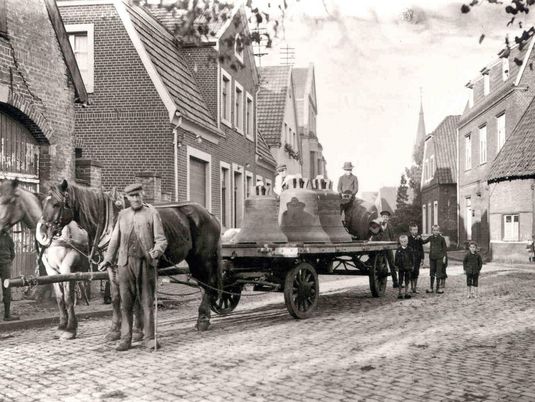
Abtransport im 1. Weltkrieg
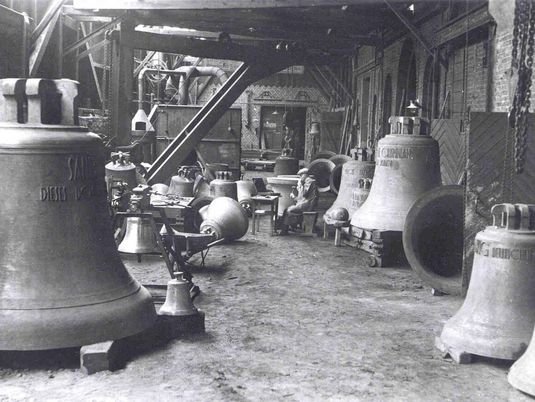
Hoher Glockenbedarf nach 1945
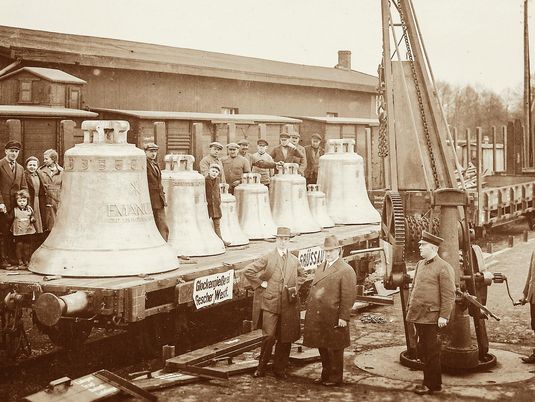
Glockenauslieferung per Bahn
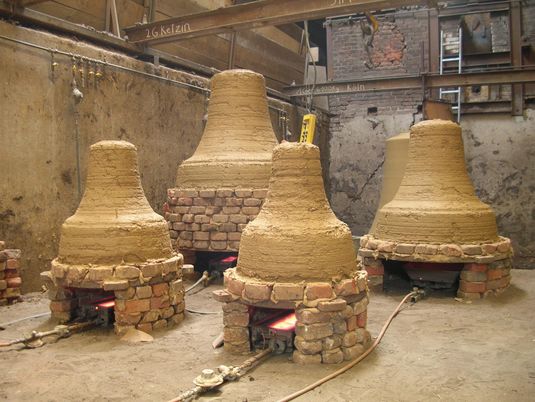
Lehmformen in der Grube
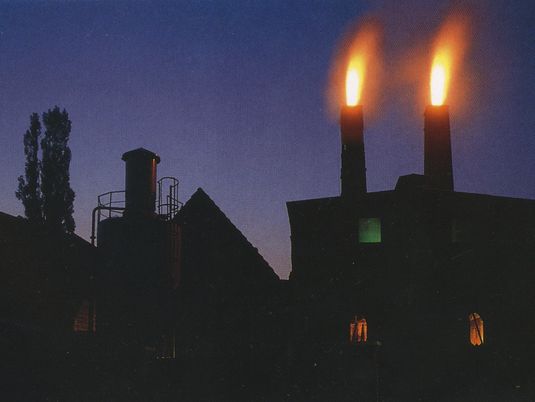
Anheizen des Schmelzofens
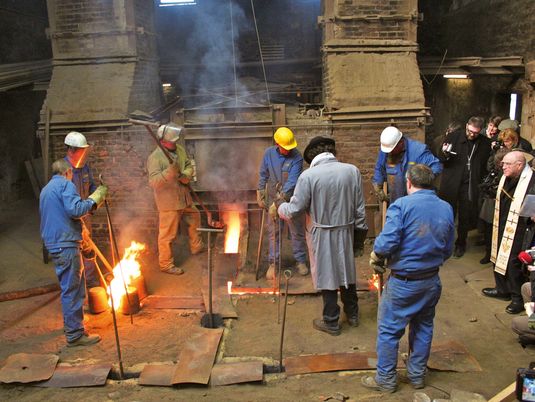
Der große Moment – der Guss

Kunstguss verschiendenster Art

Glockenstuhlfertigung

Firmenwappen
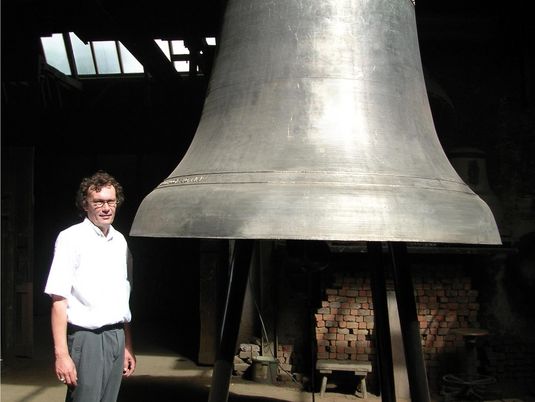
Die Papstglocke
The neighbourhood clubs
The neighbourhood clubs
Neighbourhood clubs have played an important role in Gescher for centuries. They originate from six so-called ”Rott“ districts run by Rott masters from the 15th century to around 1803. In those days the masters had to perform self-administrating duties. Some of the districts‘ names are still used by today’s clubs, such as Herrenhook, Up‘n Huskamp, In‘t Armland, De Apostelen, Up‘n Friehoff or Pastoreneck. The oldest neighbourhood club in town, ”Gantenhook“, was formed in 1805.
The original clubs consisted of the residents of six or seven houses close to each other who provided mutual support to each other at times of births, marriage celebrations, christenings, burials etc., but also in the building houses and fire fighting.
Mutual, free help was part of the local community’s life. The rights and duties of neighbours were been laid down in statutes. If they were not adhered to, fines were imposed in the form of money or food. There was a lighter side to it as well. Neighbours celebrated together, especially during carnival, which was an important event as any fines were due for payment then.
In the 19th century, there were not a great many neighborhood clubs, but their number increased along with the growth of the town. Today, there are over eighty clubs. Eleven of them are in the village of Hochmoor. The statutes mentioned above have been adapted to the spirit of the time and to current needs since many of the former tasks are now performed by service providers (e.g. nursing services).
Neighbourhood clubs today focus on socialising, maintaining a close bond with the home town and preserving old customs and traditions. Neighborhood clubs now often consist of twenty to seventy households and are chaired by a president, sometimes assisted by an executive board.
The highest representative of all neighbourhood clubs in Gescher is their senior president. Once a year, he invites the representatives of all the clubs to join the “presidents' assembly”.

Auszüge von Nachbarschaftsstatuten 1960

Die Nachbarschaftspumpe

Hilfe bei Familienfeiern
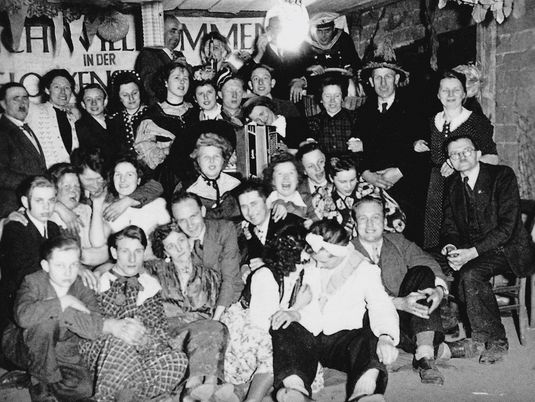
Karneval „Amsterdamer Poate“
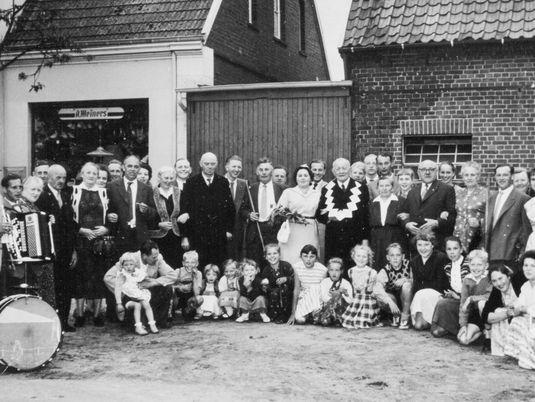
Sommerfest „Feldschulten“ 1962

Kinderschützenfest „Kattenborg“
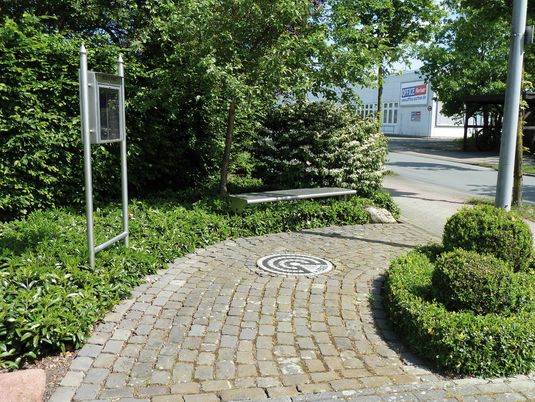
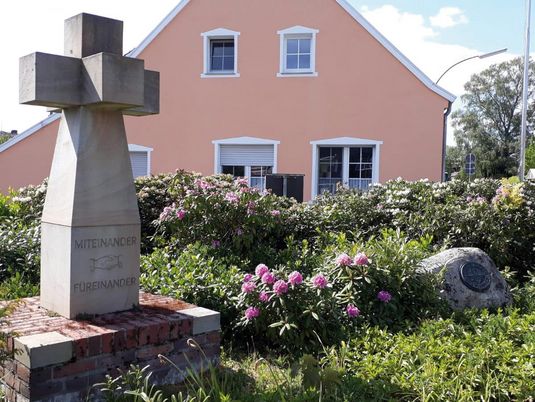
Nachbarschaftstreffpunkte


Ökumenischer Gottesdienst
Urban development
Urban development
As early as 1932 the local government drew up a master plan for the town’s further development. It served as the basis for reorganising the plots of land in town and was finally completed in 1953.
New streets were built, pointing to the town centre either radially or centrally. They not only helped relieve the centre, but provided efficient developments and attractive plots in new areas. This helped Gescher cope with its strong growth in the 1950s, which even led to a housing shortage at times. From 1940 to 1950 the town grew by about 3,000 inhabitants due to the influx of numerous people from what used to be Germany’s eastern territories and evacuees from war-torn cities in the Ruhr area.
A non-profit housing and settlement cooperative, founded in 1949, constructed numerous residential quarters from the early 1950s. Buildings from those years can still be seen today, for instance on southern Venneweg, in Eichenweg, Borkener Damm, Schultenrott and the village of Hochmoor.
To the north of the town centre, large residential quarters were built from 1960 to the mid-1980s after the Wening and Ebbing farms had been relocated. The fairly central Blenker’s meadow was, however, not built on until the mid-1990s. The new quarter was given the name "Grimoldinghof", named after the farm formerly located there. The development of open spaces densified the town. Many of the areas once used by textile companies (e.g. Greve, Paskert, Hagmann, Gaux) are now residential areas.
The town gradually expanded towards the west and south. The area around Greve's meadow was also developed in several phases. The residential area "An den Bachgärten" is situated along a naturally designed stream with lush plant border.
To the east, the Berkel valley forms a natural settlement boundary. The bypasses in the south towards the Netherlands (B 525) and in the west towards Stadtlohn (L 608) limit Gescher’s residential and industrial land development.
Parallel to its residential development, urgently needed facilities were developed - a school centre, a library, sports and leisure centres at Borkener Damm and Ahauser Damm and a new open-air swimming bath. Social facilities followed, such as several new day-care centres for children and demand-oriented residences and care facilities for senior citizens.
Over the last 150 years Gescher has developed from a street village with approximately 3,800 inhabitants to a small town with over 17000 inhabitants.

1953 – Außerhalb des Ortskerns nur vereinzelt Wohnungsbauaktivitäten

Fa. Hagmann – Fürstenkamp

Fa. Jagri – Amselweg / Jägerweg

Fa. Greve – Auf der Twente
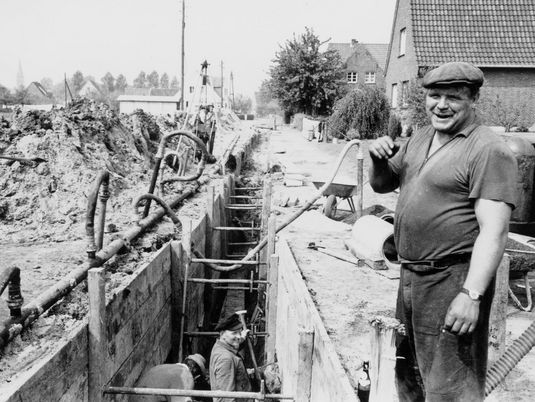
Ab 1955 reger Kanalbau

Baugebiet Finkenweg

Ab 1960 kompakte Wohnhäuser

Positive Stadtentwicklung erforderte schon immer Investitionen in öffentliche Einrichtungen

